#haseki hurrem sultan
Text
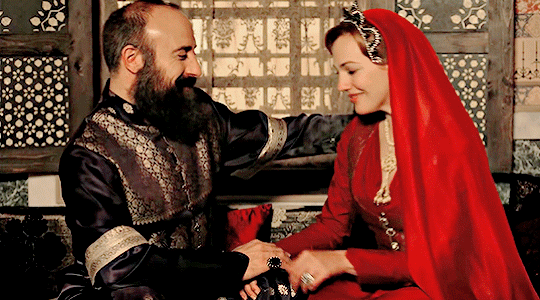
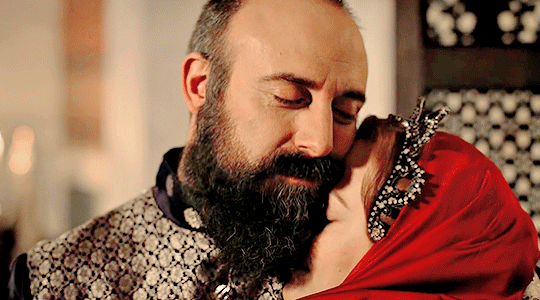

"There is no moon or sun like you in my sky..."
#magnificent century#muhteşem yüzyıl#muhtesem yuzyil#hurrem sultan#sultan suleyman#mcgifs#mcedit#meryem uzerli#halit ergenç#suleyman x hurrem#hurrem x suleyman#perioddramaedit#perioddramasource#weloveperioddrama#gifshistorical#haseki hurrem sultan#sultan suleyman i#mythings
225 notes
·
View notes
Photo

Venetian School c. 1640, follower of Francesco Montemezzano, Portrait of a Lady in a Pointed Hat, oil on canvas, 74.5 x 58 cm/29.33 x 22.83 in.
The tall hat’s pearls, precious stones and see-through veils suggest that the sitter may be an Ottoman ruler’s most famous wife: Roxelane (c. 1500-1558). Born in Ruthenia, in present-day Ukraine, she was enslaved to Sultan Suleiman the Magnificent before becoming his first wife and, according to some chroniclers, playing a key role in his political decisions. [source]
135 notes
·
View notes
Text





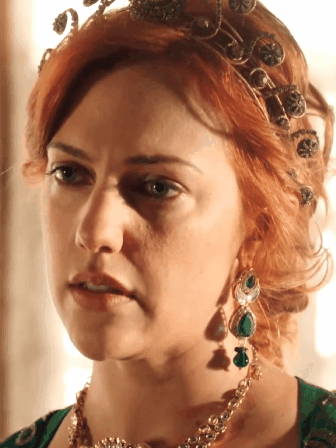
"Which justice is this? When I came to this palace, I was alone. No one protected me, and everyone was against me. İbrahim Pasha, Hatice Sultan, our late Mother, Mahidevran, everyone! How many times have I come back from death? What insults have I heard, what exiles have I seen, what punishments I have seen or experienced? Everyone said something about me; cruel, witch, wizard, cruel, but no one talked about what was done to me, no one!"
#hürrem sultan#haseki hurrem sultan#meryem uzerli#muhtesem yuzyil#muhteşem yüzyıl#magnificent century#period drama#perioddramaedit#periodedit#period rp#ottoman#periodedits#osmanlı#fyp#movie gifs#gif#historical drama#costume#green
144 notes
·
View notes
Text






"My throne of solitude, my everything, my beloved, my shining moon,
My friend, my privacy, my everything, my shah all those who are beautiful, my sultan,
My life, my existence, my lifetime, my wine of youth, my heaven,
My spring, my joy, my day, my beloved, my laughing rose.
My delight, my wine, my tavern, my lamp, my light, my candle,
My orange and pomegranate and sour orange, my candle of night,
My plant, my sugar, my treasure, my delicate in world,
My saint, my Joseph, my everything, my Khan of my heart´s Egypt.
My Istanbul, My Karaman, my land of Rum,
My Bedehşan, my Kıpchak, my Bagdad, my Horosan,
My woman of the beautiful hair, my love of the slanted brow, my love of eyes full of mischief,
My blood is on your hands if I die, have mercy oh my non-Muslim,
I am a flatterer at your door, I always praise you,
Though my heart is full of sorrow, and my eye full of tears, I am Muhibbi and I am happy."
#magnificent century#muhteşem yüzyıl#muhtesem yuzyil#hurrem sultan#sultan suleyman#hürrem sultan#suleiman the magnificent#mcedits#mcgifs#hurrem x suleyman#suleyman x hurrem#weloveperioddrama#perioddramaedit#perioddramasource#perioddramagif#perioddramasonly#gifshistorical#onlyperioddramas#haseki hurrem sultan#halit ergenc#meryem uzerli#vahide percin#tv: magnificent century#mythings
86 notes
·
View notes
Text



Magnificent Century: Hürrem
#magnificent century#mcedit#hurrem sultan#zefile#hürrem sultan#muhteşem yüzyıl#muhtesem yuzyil#perioddramagif#periodramaedit#perioddrama#turkish drama#hurrem#perioddramaedit#period drama#haseki hurrem sultan
76 notes
·
View notes
Text
Mistakes in the Magnificent Century part III
(title, ranks and traditions)
Some facts might be the same or very similar to the ones in previous parts,but they will be discussed from different angle.
1. Valide Sultan title
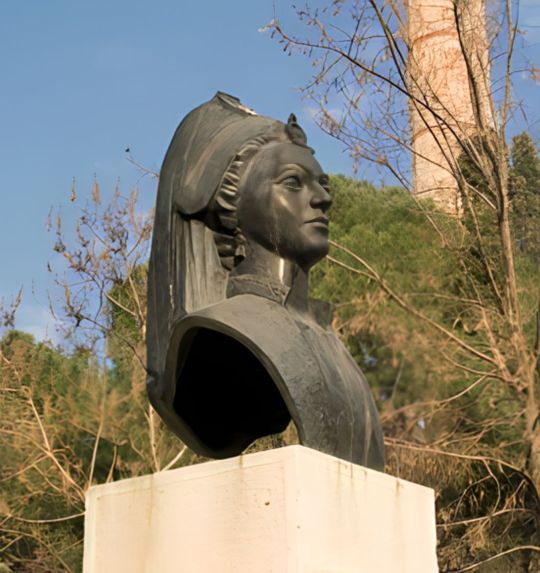
As I have spoken in the previous chapters, pre 1520 mothers of sultans were not sultans at all, they were titles as hatuns, though treated with utmost respect. In 1520 as Suleiman the Magnificent ascended the throne, he bestowed the title of Sultan to her mother Ayşe Hafsa, thus making her the first person in the ottoman history to become sultan from slavery. However, for Ayşe Hafsa being Sultan was not the same as the Valide Sultan that we know today. She was sultan yes, and she was the mother, so "Valide" was the proper address,from her children, as it was for every mother in the Ottoman empire, she was registered as "the mother of Sultan Suleiman", therefore in some sense, we can say she was not "Valide Sultan".
The first person,who actually made the "Valide sultan" a thing and officially registered herself was Nurbanu. So, the first Valide sultan with its full meaning was not Hafsa,but Nurbanu, who was registered as Valide Afife Nurbanu Sultan.
2. Haseki Sultan and Hürrem's marriage.
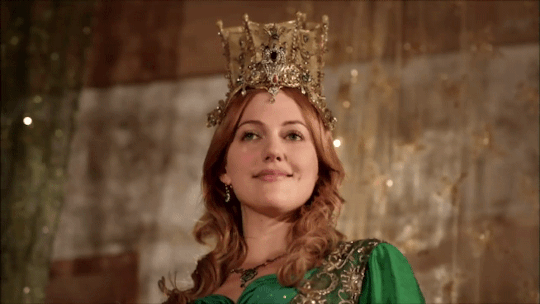
There were more than just several miscon- ceptions about the subject in the show.
First and foremost it was created specifically for Hürrem,so neither Hafsa nor Mahidevran have ever had the title. It also brought another mistake about Hafsa,that I will explain below,but now I will just make clearer how, when and why the status was created.
It was almost definitely created in mid-1534 after the death of Ayşe Hafsa Sultan and was probably legalised by their marriage, which by some sources is mentioned to be in 1533. If this is right, then it would mean, Suleiman married Hürrem before he gave her the status of Haseki and the marriage only freed her,but the most common and for me the most logical version is that after the death of Hafsa Sultan, Suleiman married her and gave her the title.
The death of Hafsa Sultan is a crucial part in the story, nor because she had some kind of objection towards Hürrem or her promotion,but the legal status of Hürrem reached its peak of necessity after her death. As we know, Ayşe Hafsa was a trusted ally and Confidant of uprising Sultan, even during his time as shehzade, so during the campaigns, his mother was the supervisor of the capital and his family, so the sultan could go to war without worrying about what he was leaving behind. However, after Hafsa's death things changed, Süleiman lost beloved mother and most trustworthy person around him, he needed to act immediately,as the campaign was near. He needed someone,whom he could entrust Harem, Family and the capital. His children were little, Sisters(whom by the way he trusted very much) were all married and Hürrem did not have a proper rank. It is said that he also discussed the candidate of high ranking harem servants, one and most promoted one of whom, in my opinion, would have been Gulfem, but he finally found the best possible solution that would affect his empire for centuries. He married Hürrem, gave her the rank of Haseki Sultan and left her in charge of the Harem, Family and the empire.
Hürrem became the first Haseki sultan in history.
Misusage of the title did not and here and there, not only the status and function,but even relevance of achievement was changed here. In the very first episode, Nigar kalfa made it clear that giving birth to a son, was enough to achieve it however, originally only the chosen ones could become Hasekis until its relevance faded during Murad's reign and completely lost exclusivity during Ibrahim's.
Essentially, the original function of haseki sultan was filling the absence of Valide, therefore only Hürrem and Nurbanu can be considered as the "original Haseki Sultans". Later many women were given the status, however the show made it wrong. Mahidevran,Mahfiruz and Halime never held it, however Şevikar, referred as Şevikar hatun in the show, was actually Haseki Şevikar sultan, the fifth Haseki of Ibrahim, three of whom, Ayşe, Mahinerv and Saçbağli, were left out, which is kind of understandable, because they had no importance in plot, unlike Turhan, never became Valide,unlike Saliha Dilaşub and Muazzez and had no influence on Ibrahim,Unlike Şevikar and Humaşah.
Their social standing is also misportrayed in the show, where Haseki ranks below and bows to imperial princesses, while in real life it was the other way around.
3. Daughters of Ottoman Princesses

In the show, we met three daughters of the ottoman princesses: Esmahan,Huriçihan and Humaşah. They are referred to as Sultans,but in real life the daughters of imperial princesses were not called so,instead they had the title Hanimsultan and ranked even below the imperial consorts. The only exception to that was Humaşah, the daughter of Mihrimah Sultan, who received the title and prestige of the Sultan.
4. Harem Kalfa

In the show, they are just giving people the rank left and right. Nigar was already a high ranking, trusted servant of harem,but it turned out that she had only been there for 6 years. Fidan hatun was banished for attacking Sultan,but after a while she returned and became Kalfa, in Kösem melek hatun received rank out of the blue etc.
In real life, however, becoming kalfa was a long process. As we know,there were hundreds or even thousands of girls in the harem,but only a handful of them would become favourites,but what would happen to others? After ten years of being a harem resident some of them would have been transferred from harem and soon married off, some could by freedom, while others, usually the smartest and most responsible ones,would go to a special school that lasted two years, they would revive extensive training, both intellectual and physical, after that they could return in harem as teachers and overseers and if they were good enough they could promote.
There was actually quite a complicated hierarchy of harem servants,not only there were Kalfa's who had duty to supervise certain works like food or laundry(later even coffee),but there were administrative ranks, that they could achieve:
Mistress chief treasurer(Baş Hazinedar usta): she was head of the harem treasury.
Treasurers(Hazinedars): there were other hazinedars as well, who worked in harem treasury. Baş hazinedar usta was their direct superior.
Imperial Kalfa(Hünkar Kalfası): Personal kalfa of the padişah.
Lady stewardess(Kahya kadin/Kethüda Hatun): she ranked below imperial consorts,but her role raised during sultanate of women, when Gülfem and Çanfeda held the office, they were right hand women of Chief Harem managers(Hürrem and Nurbanu) therefore second in command of the Harem.
Senior Kalfa(Büyük Kalfa): Head of Kalfas, she was responsible for literally everything that was happening in the harem, sultans and şehzades treated her with respect and called "my kalfa" or "your grace"
Lady secretary: secretary of administrative organs of harem.
Junior kalfa( Küçük Kalfa): Senior kalfa was their direct superior. They had ranks within( second- ranking, third ranking, novice etc.) They were sometimes teachers and daily overseers.
Çanfeda for example entered the harem with Nurbanu, so in late 1530's or early 1540's. Nurbanu became favourite and went to Manisa, while Çanfeda remained in the old palace, in 1566 she was already a high ranking kalfa in the old palace, when Nurbanu called her. That would mean she was sent to train as kalfa in late 1540's or yearly 1550's, therefore she would have a decade or two to raise in ranks.
5. Princely harem.

In the magnificent century, prince usually gets his harem, whole in Topkapi palace, which is the lie through and through. They went even further and made up with the rule that the prince can not have a child with their concubine until they get their province to rule. Why would they be allowed to have concubines,but not having a child, when contraception is still unreliable.
Actually, their case was far more easier, princes would revive their sanjaks while still very young, their mothers, governesses and close servants would carefully choose their harem and leave the palace with their mother and full sisters. That also brought another mistake in the show. In the flashbacks, we can see Ayşe Hafsa and Hatice visiting Suleiman in Manisa, however Ayşe Hafsa along with Fatma and beyhan left for Manisa with Suleiman in 1512, while Hatice,being 4 years older than Suleiman, got married the same year.
6. Regency
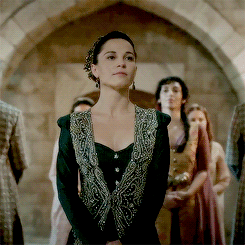
They introduced Kösem's regency as something unheard of,while completely neglecting Handan and Halime.
Handan was the first woman ever to rule as regents in her son's stead. She appointed viziers, discussed political matters and built a trusted circle for her son.
Halime was not officially registered regent but due to the insanity of her son, paşas asked her to rule the state after the rebellion she herself organized.
Kösem's and Turhan's regency is well known, so I will not speak about it.
7. Kösem's wedding

Not exactly the mistake as it is not proven, but as the event is highly unlike, I'll just put it there.
In 1609 it is said that Ahmed had four children with two women,but neither of them were married to him. In the two latters, one form 1612 and other from 1616, the 1612 letter straight out mentions her as sultan's concubine, who he loves the most and in 1616 she is mentioned as juts Haseki,but nothing is said about the marriage( I am not adamant about him not marrying her,I am just saying that it's unlikely, however I admitt she might indeed was concubine in 1612 and after the death of Mahfiruz, Ahmed married her and raised her stipend),however early in Kösem's regency vencians questioned ottoman practice, that mother of sultan was honoured and even given the regency,despite not being married to his father. As we know in Venice and generaly in Europe, source of power for woman was her marriage and not just motherhood. That is a time, when it was "unrevealed" that ahemd married her before he died,(if that latter is to be believed than Kösem and Ahmed did not marry in 1613), now it was actually thought that it was false information used by Kösem to strengthen her position in the eye of Venice as they needed friendly relation with them. That is not widely accepted,but it can be strengthened by the fact that Vencians still did not believe it, so perhaps they knew for sure that it was lie?
8. The death of Halime sultan and Mustafa.

In the show Halime, like many others, is victim of making Kösem seem more powerful, while Mustafa was killed by Murad. In real life, Mustafa died of natural causes, probably because of epilepsy in 1539, he was buried in Hagia Sophia and the coffin was placed in a mosque built for him. Halime is buried next to him and no permission of reburial was asked or granted, therefore Halime was not killed by Kösem, she went to the old palace and lived a long life.
9. 1517-1540
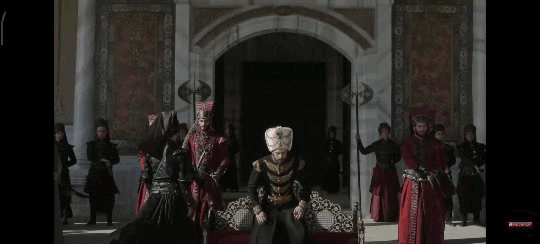
I'll be honest, I don't remember much of those episodes, they were boring and monotonous for me, but what I remember is one part from Kösem's iconic " The state you are talking about is mine" speech. She mentioned that she took over the reins of the state from Ahmed 15 years before the event, well that is a huge lie. Though the show runners tried to make Kösem all powerful, the invincible mastermind behind every single breath people drew in the empire,but she was actually quite powerless from time to time and the period between 1617 and 1623 is one of such. She was still young and inexperienced that time and main powerhouses in the empire were Halime and Osman's faction and she was not the leading force during any of the rebellions, she was allie of Halime, who, according to many historians, had major influence that time and the great impact on Kösem. Some even go as far as claiming that she persuaded Osman to kill Mehmed, so Kösem would take her side.
In short, Kösem did not have reins of sultanate for 15 years,but only about 10.
As I said, I don't remember much about the episodes, but from what I remember, Kösem had something to do with Murad's death. I'll be short on this: that's a lie.
10. Coup of 1648

The show made Kösem something of a filicidal tyrant. However, In real life her tyrannical tendencies appeared only after the death of Ibrahim, which he had nothing to do with. The ones behind the incident were Turhan and her faction. Kösem indeed took part in the Ibrahim's dethronement for the good of everyone,but mainly because she had seen the mad sultan dethroned,but lived. Mustafa had a similar situation,he was dethroned and locked in kafe, while his mother was sent to the old palace, which Kösem was absolutely willing to do. However, Turhan made her move and had Ibrahim executed to get rid of opposition for good, or perhaps because of the old resentment. Things did not go exactly as she had planned though, Kösem became regent and visibly started to avenge Ibrahim's death, it became clear that she was not going to hand over any power to Turhan and after she started to oppose even went as far as attempted dethronement of Mehmed(however she was not going to kill him.)
Therefore the child killing monster the show made her become is straight out a lie. One of her sons died of natural causes and the other was killed by outer forces, that she tried to avenge.
#history#historical drama#16th century#magnificent century#magnificent century kosem#mc: kosem#ottoman empire#ottomanladies#historical events#historical figures#sultanate of women#haseki hurrem sultan#hurrem sultan#nurbanu sultan#kosem sultan#safiye sultan#muhtesem yuzil kosem#historyedit#historical#ottoman sultanas#ottoman history#ottoman#mistakes in the magnificent century
144 notes
·
View notes
Photo



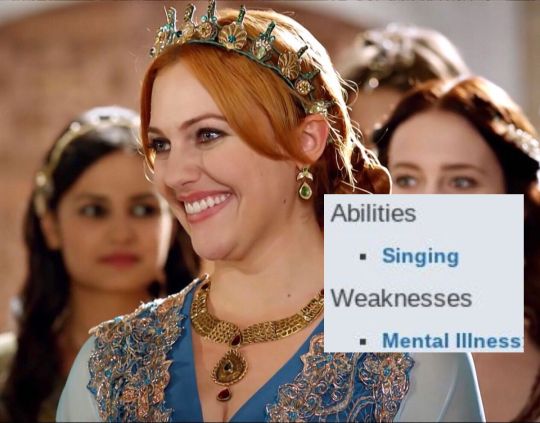




(MC’s) Haseki Hürrem Sultan + text posts and stuff
#magnificent century#magnificentcenturyedit#hurrem sultan#hurrem#haseki hurrem sultan#mahidevran x hurrem#hürrem sultan#hürrem#meryem uzerli#perioddramaedit#period drama#muhteşem yüzyıl#muhtesem yuzyil#wspaniałe stulecie#that bitch hatice#mahidevran hatun#mahidevran sultan#+ text posts#post#mine#mcedit#dyingrosesedit#dyingroses#costume drama#historical drama
215 notes
·
View notes
Text
everyone and their mother trying to avenge ibrahim by taking down hürrem and meanwhile this is one of the few incidents where she had almost no direct influence lmao
#why are they all so obsessed with that man anyway#ibrahim#ibrahim pasha#ibrahim paşa#pargali ibrahim#magnificent century#muhteşem yüzyıl#hurrem sultan#hürrem sultan#haseki hurrem sultan#haseki hürrem sultan#hurrem#hürrem#hatice sultan#sah sultan#nigar kalfa#mc tag#mc rambling#i ramble#meryem uzerli
69 notes
·
View notes
Text









Hurrem costume 10/???
#magnificent century#costume#muhteşem yüzyıl#sultana#wardrobe#costumeedit#haseki hurrem sultan#hurrem sultan#hurremcostume#hurrem
20 notes
·
View notes
Text





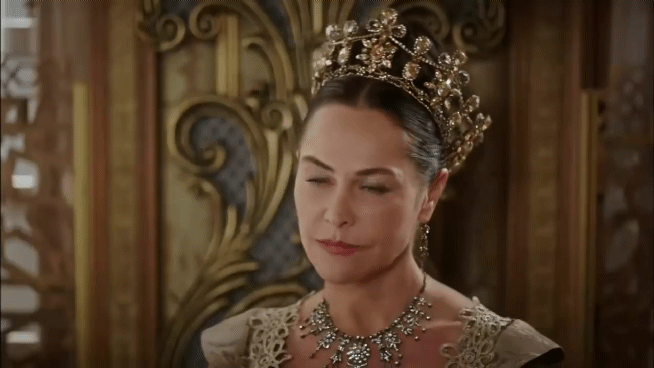
#history#magnificent century#muhteşem yüzyıl#ottoman#sultanas#ottoman history#ottoman sultanas#ottoman valide#valide sultan#valide kosem sultan#magnificent century kosem#muhteşem yüzyıl kösem#magnificent century: kosem#hurrem gif#haseki hurrem sultan#hurrem sultan#Safiye sultan#My gif
40 notes
·
View notes
Text

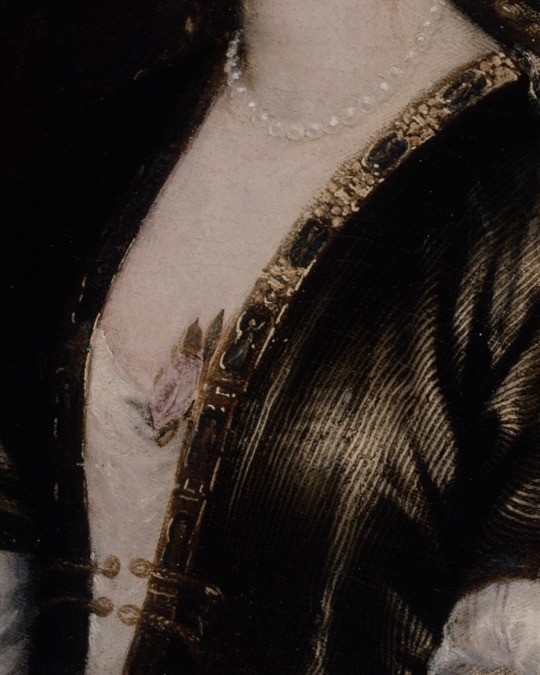
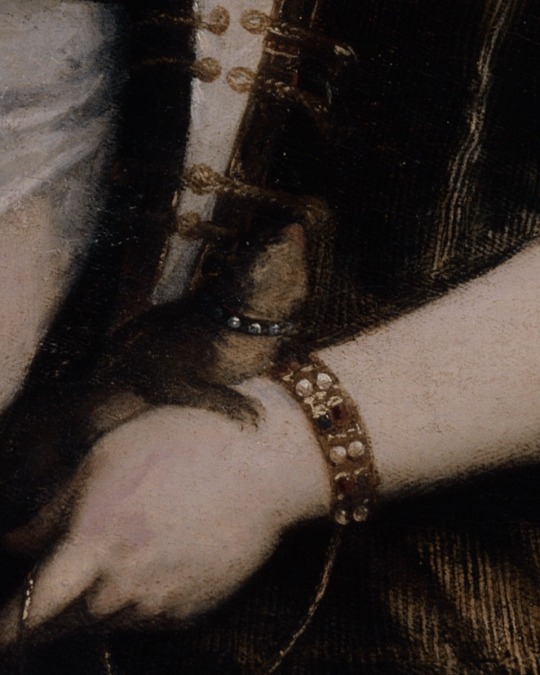

💌 Details of the famous painting of “Roxelana” by Italian artist, Tiziano Vecelli, circa 1515-1550.
Hürrem Sultan, or “Roxelana”, was the only legitimate wife of the famous Ottoman sultan, Suleiman the Magnificent — thus, she became the most influential woman in Ottoman history. Of Ruthenian origin, she was known for her bright auburn hair and profound love of and interest in poetry, which captured the sultan’s eyes and saw her rising from the status of concubine to that of founder of an era known as the “Sultanate of women”.
Under the pen name of “Muhibbi”, the sultan composed the following poem for his beloved wife:
(💌) “Throne of my lonely niche, my wealth, my love, my moonlight.
My most sincere friend, my confidant, my very existence, my sultan, my one and only love.
The most beautiful among the beautiful...
My springtime, my merry faced love, my daytime, my sweetheart, laughing leaf...
My plants, my sweet, my rose, the only one who does not distress me in this world...
My Constantinople, my Caraman, the earth of my Anatolia,
My Badakhshan, my Baghdad and Khorasan
My woman of the beautiful hair, my love of the slanted brow, my love of eyes full of mischief...
I’ll sing your praises always
I, lover of the tormented heart, Muhibbi of the eyes full of tears, I am happy.”
#hürrem sultan#haseki hurrem sultan#roxelana#ottoman empire#sultan suleiman#ottoman history#turkish history#medieval#medieval history#middle ages#poetry#poems#turkey#history#historical figures#historic#paintings#painting detail#historical painting#female history#women history#royal family#royals#royalty#royalcore
241 notes
·
View notes
Text
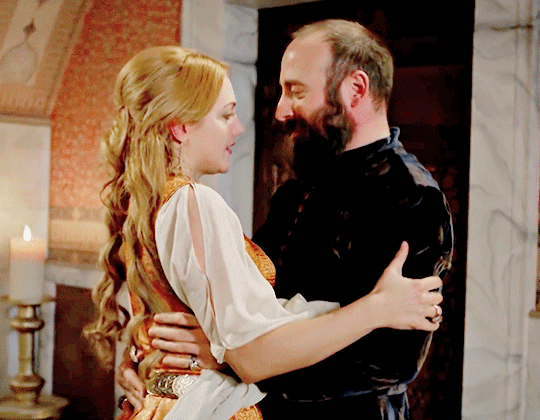

Muhteşem Yüzyıl/The Magnificent Century | Episode 40
#muhteşem yüzyıl#muhtesem yuzyil#magnificent century#hurrem sultan#sultan suleyman#halit ergenç#meryem uzerli#mcedit#mcgifs#weloveperioddrama#perioddramasource#perioddramaedit#gifshistorical#perioddramagif#haseki hurrem sultan#sultan suleyman i#suleyman x hurrem#hurrem x suleyman#mythings
204 notes
·
View notes
Text

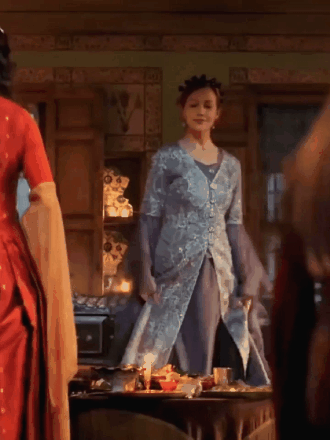




Hürrem Sultan and the color Gray costume
#hürrem sultan#haseki hurrem sultan#meryem uzerli#muhtesem yuzyil#muhteşem yüzyıl#magnificent century#magnificent woman#periodedits#period drama#period#perioddramaedit#period rp#perioddramasource#perioddramagif#periodedit#my edit#ottoman#osmanlı#grey#costume
37 notes
·
View notes
Text




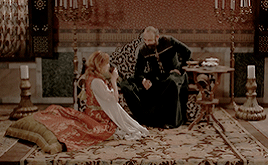

"What a happiness to see you laughing."
#muhteşem yüzyıl#magnificent century#hurrem sultan#sultan suleyman#hurrem x suleyman#suleyman x hurrem#mcgifs#mcedit#weloveperioddrama#perioddramaedit#perioddramasource#perioddramagif#gifshistorical#tv: magnificent century#haseki hurrem sultan#sultan suleyman i#meryem uzerli#halit ergenç#vahide perçin#mythings
112 notes
·
View notes
Text
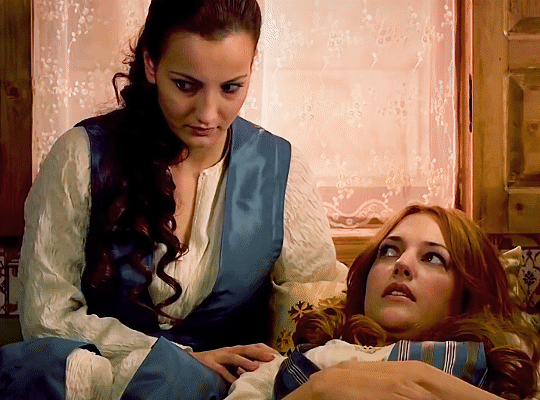

Magnificent Century
#magnificent century#mcedit#zefile#magnificent century hurrem#haseki hurrem sultan#hurrem sultan#muhteşem yüzyıl#muhtesem yuzyil#perioddrama#perioddramagif#periodramaedit#period drama#el sultan
22 notes
·
View notes
Text
Power and status of ottoman princess
Title and honorifics
Before the rule of sultan Bayazid II every high ranking woman were called Hatuns,including mother,sisters,aunts and daughters, however thier social standing was naturally higher than non imperial women. The way to adrress them was Hatun that was used after their given name,for example, Gevherhan hatun,daughter of Mehmed the coqueror or effendi that would have similar meaning as mistress.
After accession of Bayazid II his daughters and granddaughters were given title of sultan,however non of his living sisters or aunts got the honor. Later on proper way to adress them woulf become “Sultanim”, which would mean “my sultan”,or again “effendim” by other members of imperial family. I would like to underline that contrary to what wikipedia states, there is no records that I know,where princesses where called with “Devletlu İsmetlu” like Valide sultan and Haseki sultan were.
The term “sultana” that was made more feminine by Europeans never existed in ottoman language.
Family, Marrige and Issues
I want to start discussing their family with brothers,it’s widely known fact that before suleyman there was “once concubine,one son” tradition therefore if shehzade/Sultan had full-sisters they were all older,that is one way to deduce if princess of unspecified mother was full sister of half sister of reigning sultan. Naturally Shezades had closer relationship to their full sisters as they were leaving with him and their mother,when he was appointed as governor of princely province. Their latter life would be spent in their brother’s harem before marriage.
being half sister of sultan did not automatically mean that their relationship would have been stained,however mostly,princess would favour full-brother over half,but were treated by same respect regardless who ascended the throne. It was different case when imperial princess had no full brother at all,for example Sah Huban, she had very close relationship with Suleyman,even closer than his deeply respected full sisters.
Their marriages,much like any other princesses of any country, was political,arranged by their parents to strengthen standing of their father or brother,for example daughters of Selim I were firstly married to powerful politicians,so their father would have supporters in his rebellion,while their second marriages were arranged to help Suleyman in his early reign. Their husbands were usually much older than them, therefore marital life was likely not consensual and in no way their choice. For example,Rustem paha,husband of Mihrimah,was same age as Hurrem,her daughter’s fate was even worse as she had to marry peer of her own grandfather,however given the fact that they had 8 children,marriage can be considered successful. After the Marriage princesses were getting their own little “Harrem”,where they had great rooms for themselves and their servants,where even their Husbands needed permission to enter and even refuse to have sexual intercourse with them,sometimes their marriage could end unconsumated and after some time princess could use another of their privilege-divorce. Reason of divorce could have been different: Personal attitude,mistreatment,political move or adultery. It was made clear,especially by Suleyman,that imperial princesses were full-fledged members of imperial family so they ranked higher than their husbands,therefore having relationship with other women was their humiliation,which would lead to divorce, after which they would retire in old palace and could refuse to remarry again.
Only their first degree descendants would be given imperial titles.
Daughters- Hanimsultan(with Ayse Humashah as exception)
Sons-Sultanzades. They ranked even below non-sultan imperial consorts and some of the highest ranking harem servants.
Hierarchy and Power
They actually had equal standing in ottoman hierarchy. As female members of dynasty they had the same status and privileges,were reffered as sultans and often received relative stipend.( Which was on average 200 akche a day, for comparison, Valide sultan had around 2000-3000 depended on time period, Haseki sultan 1000-1100(Hurrem as only exception,who got stipend of Valide sultan ) Gulfem,who was almost regarded as member of family herself was recieving 150, Nurbanu’s trusted friend and one of the highest ranking non-sultan woman ever Canfeda received 200, Mahidevran only received 40 and avarage stipend of cariye was 2-4) Besides, sisters of sultans were technically daughters of sultan, though the deceased one, still they were treated with great respect much like their late father. However, birth order was important thing in ottoman society so younger sister respected older and bowed to them as well as nieces bowing to aunts regardles of their martial or fianacal status. Therefore saughters of sultan,as nieces, were calling sisters of sultan,as aunts, “effendi" out of respect.
In conclusion, even if they had same social standing, sisters of sultan were still bit ahead daughters of sultan formally.
However, Granddaughters, Nieces and cousins of sultan,despite the same rank, were less prestigious.
Despite their relative social status and order of birth their actual power was dependent on several factors:
1. Their relationship with Padishah,Valide sultan or Haseki sultan. They had higher rank and much more evident political power, they still needed their permissions about major decisions,even if it were their right, so being on good terms with them was a good move. Half-sisters naturally were not as favoured as full-sisters by Valide sultan,but with padisah had more options, they could have been supportive, religious, charitable and obedient another way was sending beautiful, well-educated concubines,who could have become Haseki(after 1533), that is when their good relationship begun,most of Sultanate of women memebers were raised at their court and remained in favour after they became Valide Sultans, in that case even some of the Padisah’s expressed gratitude and gratefulness for raising their mother, (such occasion was Ahmed I’s attitude towards her aunt which I will discuss below.), they could also donate money to wars, harem managements and charitable projects, either all their own or assist Haseki sultan.
2. The second way to gain power was wealth. Money opens many doors and it was like that in the past. They could establish some business or even receive bribes.
3. They could also gain power with marriages, it was not only beneficial for their brothers,but for them as well. If their husband had a high rank, they could keep an eye on the political situation and act accordingly, they would use that influence to assist their brothers, who,In turn, would be extremely grateful for their support.
Comparison between Ottoman and European princess
Status- Status of European princesses depended on their marriage. Being princes was not guaranteed power,but only a formal status. For example, Margaret Tudor was below prince Henry in rank but when she married by proxy to Scottish king, she outranked him and demonstrated that by walking in front of him. On the other hand, another sister Mary married to Charles Brandon and was Duchess of Suffolk ever since,while Status of Imperial princess remained the same.
Opportunity- European princesses could have become Queen consort and Queen mother and veiled immense power, while imperial princesses could never become Haseki or Valide.
Marriage- Ottoman princesses were usually older when married and outranked their husbands,while European princesses were always below their husbands. Sultan could also refuse remarryin,while European princesses had no such right
Freedom-European princesses were less limited by social customs.
Consummation-Ottoman princesses had the right to refuse Consummation without a deadline, while European princesses had to Consummate marriage even if they were twelve, unless of course parents arranged it other way.
Divorce - it was right of ottoman princesses to divorce their husbands,while for European princesses it was a rare privilege.
Despite so many differences, one thing was same- they had a loveless purely political match .
Powerful ottoman princesses
Here I Rank ottoman princesses,who had considerable power and influence, sorted by date of birth.
P.S gifs are from MC and MC:K,but some characters might represent different historical figures.

Fatma sultan
Fatma may have been the second child of Ayşe Hafsa and Selim I . She was born in Trabzon around 1492 and spent her childhood there. When her younger brother Süleyman received his own princely province in 1509, she probably accomponied him to Caffa with their mother.
She was married in 1516 for the first time,but it soon ended in divorce and Fatma returned to Manisa. She gained considerable influence as she was most likely the sister,who was recorded to be in Manisa, helping mother manage harem and protect Suleyman from their father. If legends are true and Selim was indeed trying to kill Suleyman,that she had hands in saving him. Most likely, Fatma and her mother were instructing young sukeyman,how not to deserve the wrath of father and covering his mistakes. After Suleyman ascended the throne, she was married again to Kara Ahmed pasha in 1522. Marriage lasted long,but did not produce any child, so either fatma was infertile (Kara Ahmed pasha had two daughters that are disputed to be fatmas,but they were likely from previous marriage) or the match was not happy and Fatma refused sexual intercourse, however considering her reaction to his death, it was most likely the former.
According to what we have Fatma seems to be quite free spirited as depicted in the series. She was wealthy, cunning and might have been fond of parties. She had hands in financing some of her brother’s campaigns and even won the favour of janissrries. However, in 1555 Kara Ahmed pasha was executed by the efforts of Mihrimah and Hurrem and Fatma was married to eunuch and banished from the capital for hed intrigues against them She died either in 1557 or 1573.

Sah huban sultan
Daughter of Selim I and unknown concubine, born in 1500. As she has no full brothers, she was very close to Suleyman and their father, with whom she spent most of her childhood. Considering Suleyman’s great respect for her, Sah was likely a supporter of him and helped to deal with Selim I.
She was married in 1523 to well-educated and intelligent Lutfi pasha with whom she shared religious thoughts and beliefs. Marriage, however did not seem to be successful the couple only had one daughter and Sah refused to have a sexual relationship ever since. She was very pious, intelligent,outspoken and fierce in nature. In the only description of her daughter Esmahan Burnaz, it is said that she was arrogant and demanding and it was Shah’s domineering attitude in the family that was blamed for it, as by this “she had ruined the role of woman” in the child’s mind. However,that was recorded by the European ambassador only, who had never met any of them and probably heard some rumors or made it up after an ugly end of their marriage.
In 1541, Lutfi pasha punished a prostitute for adultery by mutilating her genitals.Şah could not tolerate the humiliation and mutilation of a woman without a word, which is why she got into an argument with her husband, who hit her . Şah had Lutfi pasha beaten up and immediately asked his brother to allow the divorce. Süleyman then exiled him. Şah remained with her brother in Istanbul for the rest of her life and supported the wife of Süleyman, Hürrem, in carrying out her construction projects. She lived a modest life in the Old Palace and devoted all her time to charity and religion. Shah had excellent relationship with Hurrem and Mihrimah and in my opinion, close bond between aunt and niece helped young sultan to shape her mind and characteristics.
She died in 1572 and was buried in her father’s complex.

Mihrimah Sultan(1522-1576)
Her life is very much known. She was the most powerful imperial princess in the empire, so I will just list some of her achievements:
1. Her stipend was 600 akches a day during the reign of three different Sultans. it was three times as much as regular pirncess
2. She had correspondence with Catherine de Medici and other foreigner diplomats, who would often send her gifts to help them in some political affairs.
3. She financed some of Suleyman’s campaigns all her own
4. She built a whole fleet of 400 ships.
5. She had three palaces and two mosques
6. She served as sole de facto Valide from 1558 to 1566 and shared it with Nurbanu from 1566 to 1574.
7. After the death of Bayazid Mihrimah banned everyone from laughing and sent back clothes to Suleyman and Selim who were secretly planning a grandiose wedding, that was cancelled by Mihrimah and instead a very plain ceremony was held.
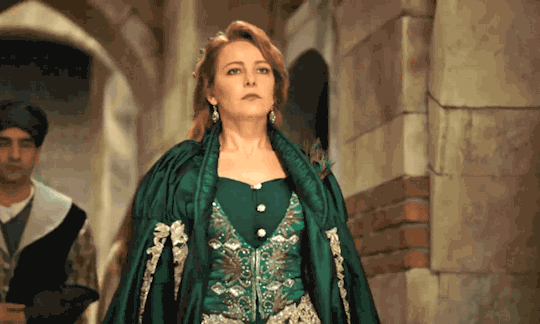
Humasah 1543-c.1582 or later
She was a posthanous daughter of Shehzade Mehmed and despite being only a daughter of prince, she was given the same privileges,but greater power, as any other sultans. She was one of two favourite grandchildren of Hurrem and Suleyman. She married three times,but the source of her power was a good relationship with Sultans. She was the one who raised Safiye and gifted her to Murad, so her power reached it’s peak during his reign.
She financed many construction projects,but was buried in a mosque that was built by Hurrem and Suleyman for her father.

Ayse Humasah 1543-1594.
Daughter of Mihrimah sultan and Rustem pasha, she was practically the same as her cousin with whom she shared many things started from date of birth and ended with their name. Ayse Humasah was the only woman born to an ottoman princess,who was herself addressed as sultan and her children were considered members of the dynasty. She was married two times and her influence was extremely great during the reign of three Sultans. Her power reached it’s peak, when her husband was appointed a grand Vizier and she had hands in very major political decision.

Gevherhan Sultan. 1544-after 1526.
Eldest child of Nurbanu and Selim. She was married to Piyale Pasha, an admiral who died in 1578 and she was remarried in 1579. She was one who raised Handan and gifted it to the prince, for which not only Handan was grateful, but her son Ahmed as well, who after his accession gifted very expensive furs to Handan, Gevherhan and Safiye. The second gifts were given to Handan and Gevherhan only,which indicates that unlike Safiye,she never fell from his favour. Peak of her power was from 1598 during her husband’s grand vazirate. She did a lot of charity in her life.
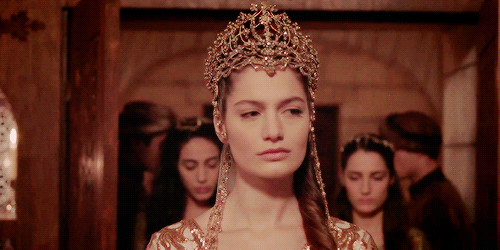
Ismahan sultan 1545-1585
Daughter of Selim and Nurbanu,she was married to Sokollu Mehmed Pasha and Through her husband and her own rank, Esmehan was the most influential sultana of the empire for years. In wealth, only her aunt, Mihrimah, could overtake her, but in influence, almost no one could. She constructed several projects and had foreign diplomatic affairs, most notable her correspondence with Catherine de Medici. She had a very artistic and dramatic personality, often throwing parties and shows. She was recorded to be very much alike Hurrem,both of them were short, not conventionally beautiful,but very intelligent. She was heavily involving herself in politics with her mother.
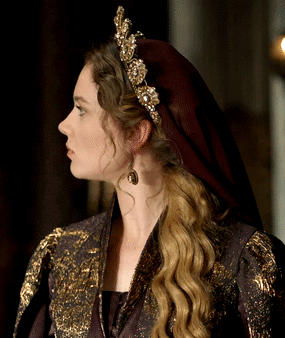
Burnaz Atike Sultan
Sultan Atike was born in 1614 or 1615 and although some sources consider her to be the daughter of Kösem, she was certainly not her child. That can be supported by the fact that she supported Turhan’s rebellion and had a good relationship even after kosem was killed. She was one who raised Turhan and remained in friendly terms for both Turhan’s gratitude and their shared politican views. Atike was noted to love children very much,but had none on her own, so she was involved in raising her nephew,who regarded her as second mother and listened to every of her advice.
She died around 1570.
I hope you liked it, I think it’s unfair to only talk about Mihrimah,while there were so many powerful and intelligent Princesses. I did not talk about Esma sultan as she was in later centuries and I am not fond of her times.
Which ottoman princesses are you favourites?
If i accedentaly missed something out you can ask it in comments
#historical drama#period drama#history#sultanas#valide sultan#medieval women#nurbanu sultan#hurrem sultan#mihrimah sultan#safiye sultan#kosem sultan#turhan sultan#magnificent century#magnificent century kosem#mc: kosem#sultanate of women#sultan suleyman#haseki hurrem sultan#ottoman history#ottomanladies#ottoman empire#15th century#16th century#17th century
107 notes
·
View notes